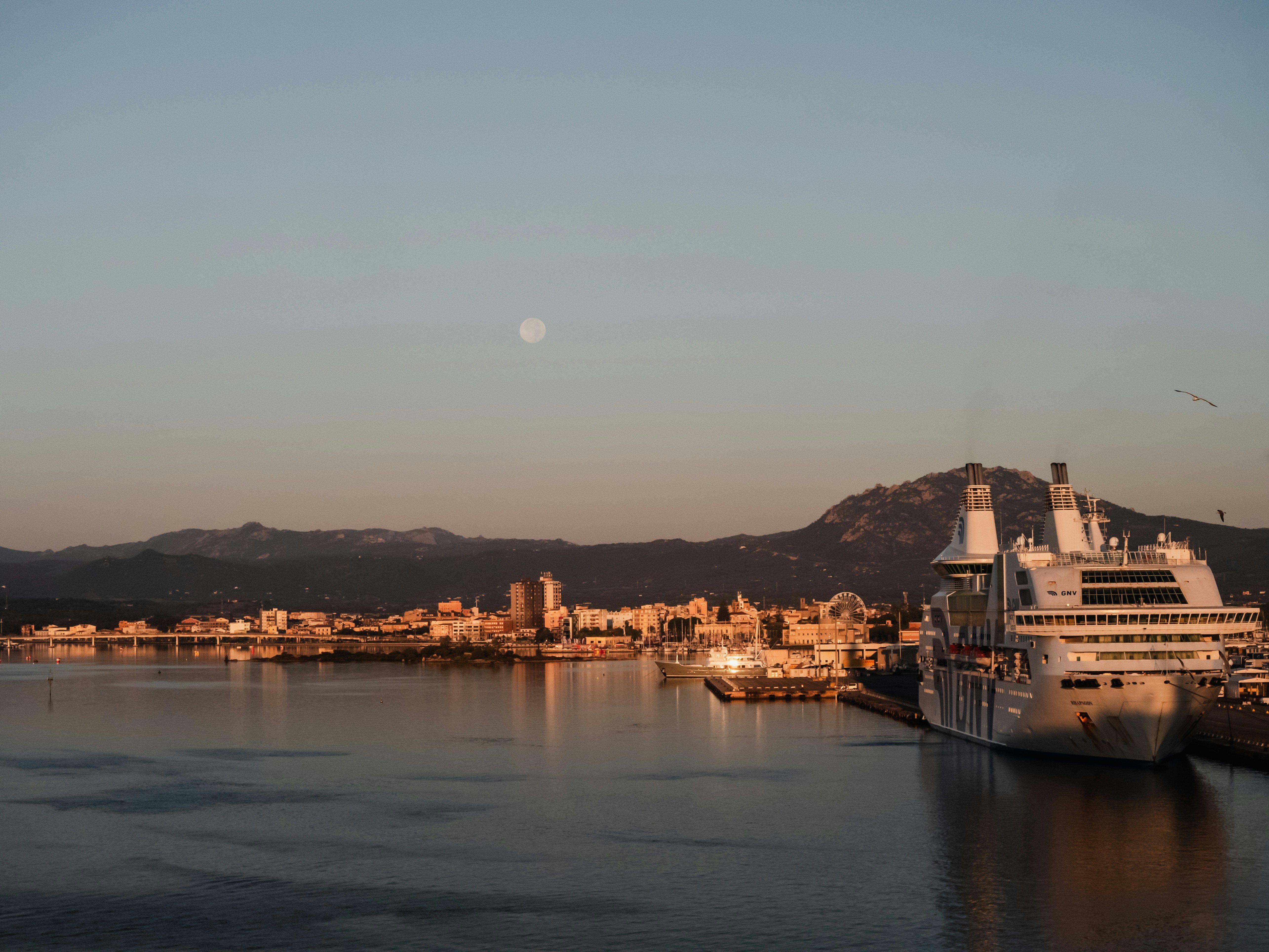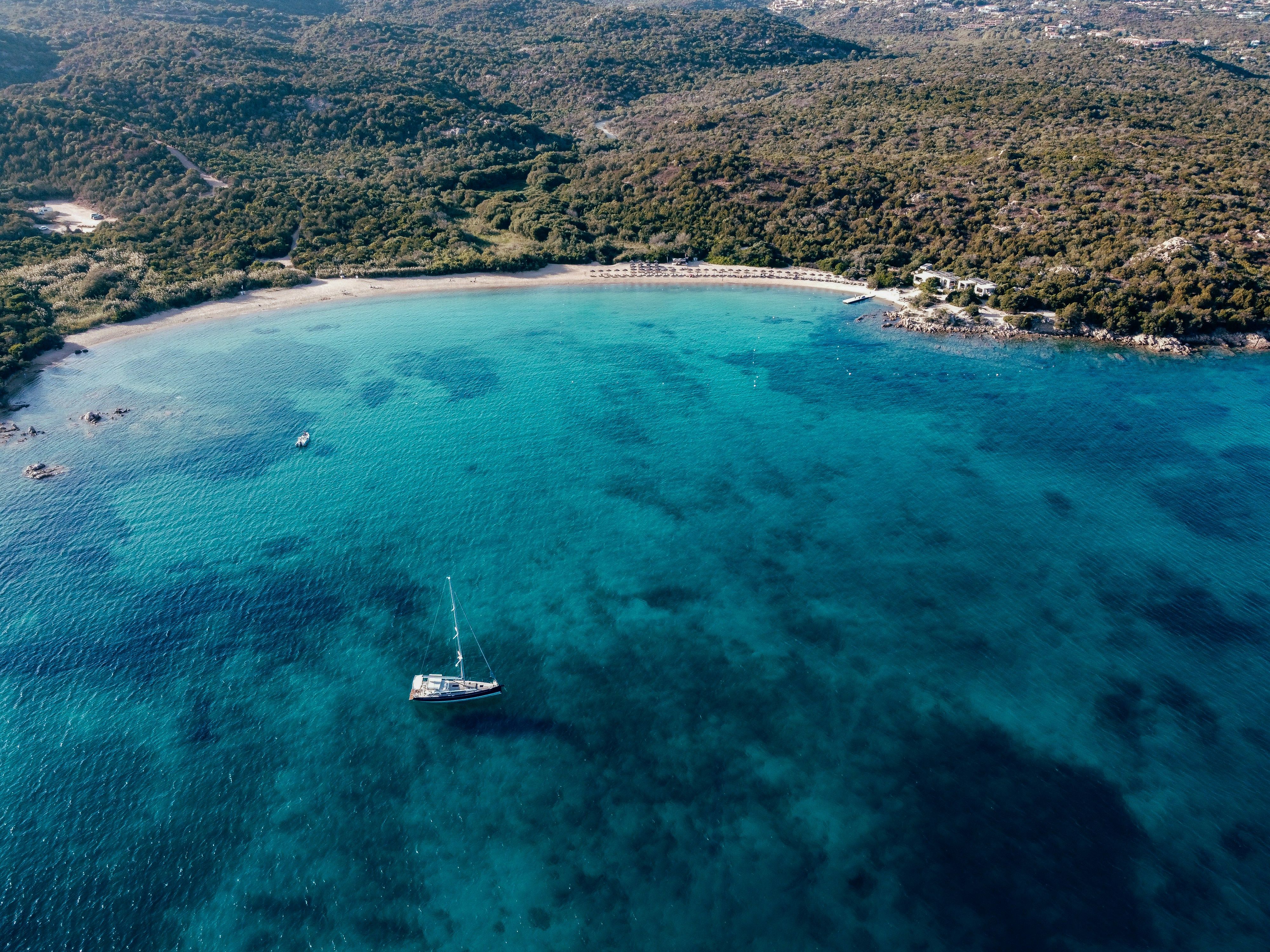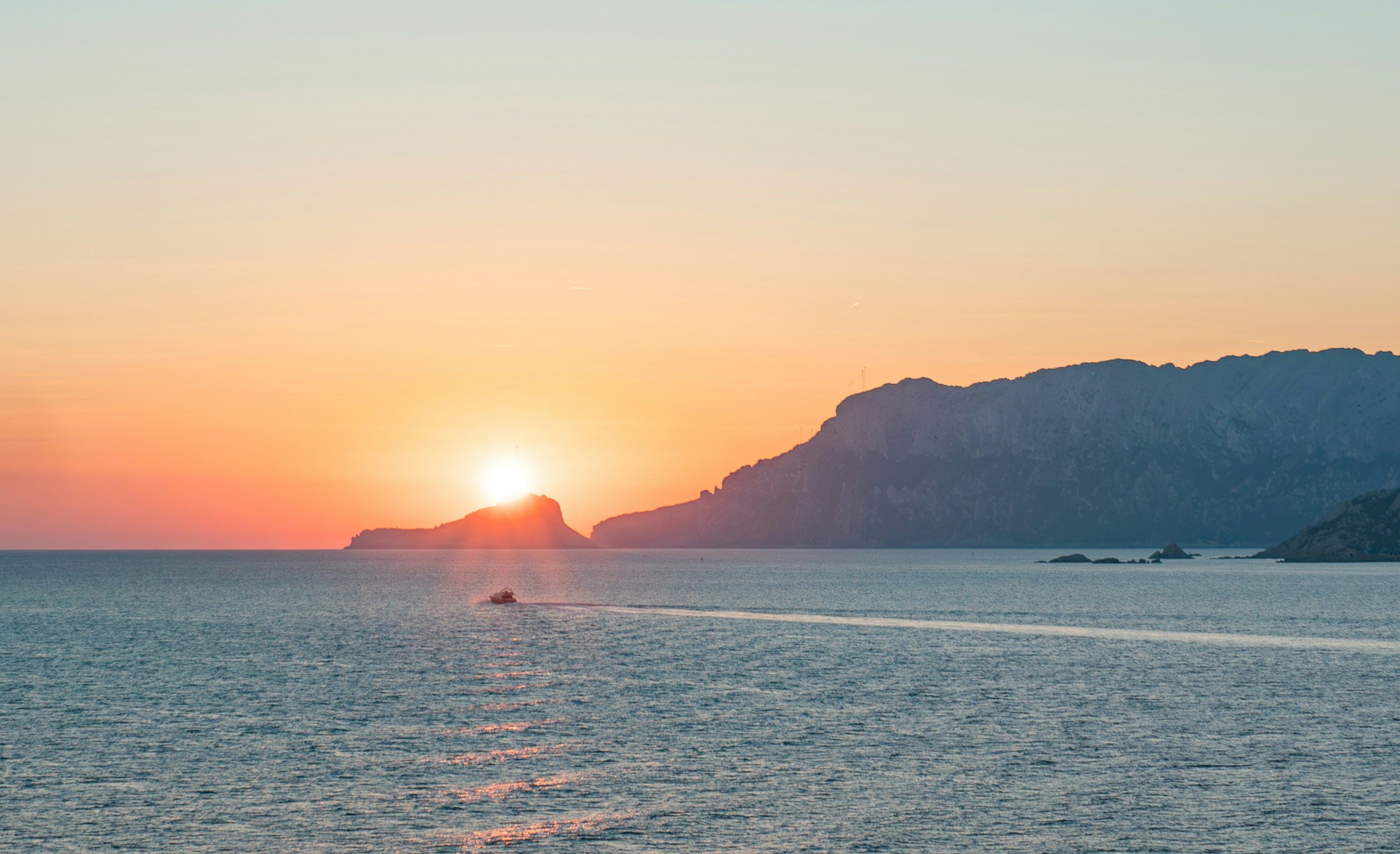Travelling from Livorno to Olbia: Complete Ferry & Travel Guide
Travel Guides
Travel Guides


Exploring the journey from Livorno to Olbia offers travellers a fantastic opportunity to experience the beauty of the Mediterranean Sea while transitioning from the Italian mainland to the stunning island of Sardinia. This popular route spans approximately 301 km (187 miles) and is primarily served by ferry connections, making it an ideal choice for those wanting to bring vehicles or enjoy a leisurely sea journey. With approximately 3 daily sailings and 22 weekly connections, this route provides flexible travel options year-round. This comprehensive guide covers everything you need to know about traveling between these two vibrant ports, focusing on ferry services while also acknowledging flight alternatives. Whether you're planning a vacation, business trip, or island exploration, we've compiled essential information to help you navigate this beautiful Mediterranean crossing.
When planning your journey from Livorno to Olbia, you have several transportation options to consider, with ferries being the primary and most direct connection.
Ferry travel is the dominant mode of transportation between Livorno and Olbia, offering a convenient way to cross the Tyrrhenian Sea. The ferry route covers approximately 162.5 nautical miles and typically takes around 8 hours and 47 minutes. The shortest crossing time is approximately 7 hours and 30 minutes with Grimaldi Lines, while the longest journey may take up to 10 hours. With 3 daily sailings and 22 weekly departures, ferries provide frequent and reliable connections between these ports.
The advantage of ferry travel is the ability to bring your vehicle, enjoy comfortable amenities during the journey, and experience the beautiful Mediterranean seascape. Prices for ferry crossings average around £354, though this can vary depending on the season, cabin type, and whether you're bringing a vehicle.
While direct flights between Livorno and Olbia are not common (as Livorno doesn't have a major international airport), travellers sometimes opt to fly from Pisa (the closest international airport to Livorno) to Olbia. However, this option involves additional transportation to and from airports, potentially making the overall journey time comparable to the ferry crossing.
You can take a ferry from Livorno to Olbia. Ferries sail in around 8 hours and 47 minutes with about 3 sailings a day. The fastest ferry sails in around 7 hours and 30 minutes and is provided by Grimaldi Lines. Ferry prices can range depending on operator, whether it is a conventional or fast ferry and time of year. The average price of a standard crossing is around £354. Departures start as early as 08:55, with the last departure from Livorno to Olbia at 22:30.
Grimaldi Lines is the primary operator offering the fastest service on this route. Their vessels are well-equipped with various amenities to ensure a comfortable journey across the Tyrrhenian Sea. The company operates modern ferries that provide passengers with multiple options for their crossing experience.
Onboard amenities typically include restaurants, bars, lounges, and various accommodation options ranging from comfortable seating areas to private cabins. Most ferries offer duty-free shopping, entertainment options, and outdoor deck space where you can enjoy the Mediterranean views during your journey. Wi-Fi service is often available, though connectivity may vary during the crossing.
The Livorno-Olbia route operates year-round, but you'll find increased frequency during the summer months (June through September) when tourism to Sardinia peaks. If you're travelling during this high season, we recommend booking your ferry tickets well in advance to secure your preferred sailing time and accommodation type.
One significant advantage of ferry travel is the ability to bring your vehicle to Sardinia. This option provides tremendous flexibility for exploring the island at your own pace. Cars, motorcycles, campervans, and bicycles can all be transported on these ferries, making it convenient for road trips around Sardinia. Vehicle spaces fill up quickly during peak season, so early booking is essential if you plan to bring your car or other transport.
Livorno's port is one of Italy's major maritime gateways and is well-connected to the city centre. Located approximately 2 km from the heart of Livorno, the ferry terminal is easily accessible by various transportation methods.
Public transportation options include city buses that run regularly between the city centre and the port area. Taxis are readily available throughout Livorno and provide direct service to the terminal. If you're driving to the port, follow signs for Porto di Livorno or Terminal Traghetti. Long-term parking facilities are available near the ferry terminal, allowing you to leave your vehicle securely during your trip to Sardinia.
The terminal itself offers essential amenities for travellers, including ticket offices, waiting areas, restrooms, and small shops for last-minute purchases. Food options range from cafés to quick-service restaurants where you can grab a meal before boarding. The check-in process typically begins 2 hours before departure, and we recommend arriving at least 90 minutes prior to sailing, especially if you're travelling with a vehicle.

Olbia's port, known as Isola Bianca, serves as the main gateway to northeastern Sardinia and is located approximately 3 km from Olbia's city centre. Upon arrival, you'll disembark at a modern terminal facility that provides a smooth transition to the island.
From the port, you have several transportation options to reach your final destination. Local ASPO buses connect the port to Olbia's centre and run regularly during ferry arrival times. Taxis are available outside the terminal building, offering convenient but slightly more expensive transport. Many car rental agencies have offices at or near the port, providing an excellent option for travellers without their own vehicles who wish to explore Sardinia independently.
The port area features various services, including information points, currency exchange, restrooms, and small shops. Several cafés and restaurants are located near the terminal, perfect for a refreshment after your sea journey. If you need to store luggage temporarily, locker facilities are available within the terminal building.
While the Livorno to Olbia route covers a significant distance, a day trip between these destinations is challenging but not impossible with careful planning. The ferry journey alone takes approximately 8 hours and 47 minutes on average, meaning a round trip would consume most of a 24-hour period.
If you're determined to attempt a day trip, your best option would be to take the earliest morning departure from Livorno at 08:55, which would get you to Olbia in the late afternoon. You would then have a few hours to explore before needing to catch an evening return ferry. However, this schedule leaves very limited time in Olbia itself, making it difficult to truly experience what the city has to offer.
A more practical approach would be to spend at least one night in Olbia. This allows you to take a morning or afternoon ferry from Livorno, spend the evening and following day exploring Olbia and its surroundings, then return to Livorno the next evening. This arrangement gives you approximately 24 hours in Sardinia, which is much more reasonable for sightseeing and enjoying local experiences.
For those with limited time but still wanting to experience both locations, we recommend spending a minimum of two nights in Olbia. This gives you a full day to explore the city and perhaps take a short excursion to nearby beaches or archaeological sites without feeling rushed. Remember that Sardinia is a destination best enjoyed at a leisurely pace, with its beautiful coastlines and rich cultural heritage deserving more than just a few hours of exploration.
Olbia offers visitors a wonderful blend of historical sites, natural beauty, and authentic Sardinian culture. Here are the top attractions to consider during your visit:
Basilica di San Simplicio - This beautiful 11th-century Romanesque church is Olbia's most important historical building. Constructed using local granite, it represents the purest example of Sardinian Romanesque architecture. Open daily from 8:00 to 20:00 with a midday closure, this peaceful sanctuary provides insight into the island's religious heritage.
Archaeological Museum - The Museo Archeologico di Olbia houses an impressive collection of artifacts spanning from prehistoric times through the Roman era. The highlight is a perfectly preserved Roman ship discovered in the harbour. Open Tuesday through Sunday from 10:00 to 18:00, it offers fascinating insights into the region's maritime history.
Isola Tavolara - This dramatic limestone massif rising from the sea makes for an excellent day excursion from Olbia. Regular boat services take visitors to this stunning island, where you can hike, swim in crystal-clear waters, or dine at rustic seafood restaurants. The panoramic views from the island are simply breathtaking.
Porto Cervo and Costa Smeralda - Just a short drive north of Olbia lies the famous Costa Smeralda (Emerald Coast), with its turquoise waters and pristine beaches. Porto Cervo, the area's glamorous heart, offers luxury shopping, high-end dining, and people-watching opportunities, especially during the summer months.
Nuraghe Riu Mulinu - Located on Cabu Abbas hill overlooking Olbia, this ancient stone fortress dates back to the Bronze Age. The site offers both historical interest and spectacular views of the surrounding countryside and gulf. Open daily from 9:00 to 19:00 during summer months, it provides a glimpse into Sardinia's mysterious nuragic civilisation.
Olbia's compact size makes it easy to explore various neighbourhoods during your visit:
The Historic Centre (Centro Storico) is where you'll find narrow streets lined with shops, cafés, and traditional buildings. Corso Umberto is the main shopping street, bustling with activity and lined with boutiques, while Piazza Regina Margherita serves as a central gathering place with outdoor cafés perfect for people-watching.
The Waterfront Area near the tourist port offers a more modern atmosphere with promenades, parks, and seafood restaurants serving fresh local catch. This area comes alive in the evenings when locals and visitors enjoy passeggiata (evening stroll) along the water.
For authentic local experiences, explore the San Simplicio District surrounding the basilica, where you'll find traditional homes, small family-run restaurants serving Sardinian specialties, and a more relaxed pace of life away from the main tourist areas.
The Poltu Quadu neighbourhood, slightly removed from the centre, offers a glimpse into everyday Sardinian life with local markets, community spaces, and eateries catering primarily to residents rather than tourists.
Olbia enjoys a typical Mediterranean climate with hot, dry summers and mild, somewhat rainy winters. This predictable weather pattern makes it relatively easy to plan your visit according to your climate preferences.
Summer (June to September) brings consistently warm and sunny weather with temperatures typically ranging from 25°C to 32°C (77°F to 90°F). July and August are the hottest months, with very little rainfall and abundant sunshine. These conditions are ideal for beach activities and water sports but can feel quite hot for extensive sightseeing or hiking.
Spring (April to May) and autumn (October to November) offer pleasantly mild temperatures between 15°C and 25°C (59°F to 77°F). These shoulder seasons provide comfortable conditions for exploring Olbia and its surroundings, with fewer crowds than during peak summer. You might encounter occasional rainfall, particularly in late autumn, but extended downpours are uncommon.
Winter (December to March) in Olbia is relatively mild compared to continental Europe, with daytime temperatures usually between 8°C and 15°C (46°F to 59°F). This is the rainiest season, with December and January seeing the most precipitation. While not ideal for beach activities, winter offers opportunities to experience local culture without tourist crowds.
Regarding ferry operations, weather conditions generally don't significantly impact services during summer and shoulder seasons. However, winter crossings may occasionally face delays or cancellations during particularly strong storms or high winds. The ferry operators monitor conditions closely and prioritise passenger safety, so it's advisable to check for updates if travelling during potentially inclement weather.

Olbia and the surrounding region can accommodate various budget levels, though costs tend to increase significantly during the peak summer season.
For budget travellers, daily expenses might range from £60-£90 per person. This would include staying in hostels or budget hotels (£25-£40 per night), eating at casual restaurants or preparing some meals yourself (£20-£30 daily), and using public transportation to explore (£5-£10 daily). Many beaches and natural attractions can be enjoyed for free or minimal cost.
Mid-range travellers should budget approximately £100-£180 daily per person. This allows for comfortable 3-star accommodations (£60-£100 per night), dining at mid-range restaurants (£30-£50 daily), and perhaps renting a car for exploration (£25-£40 daily plus fuel).
For a luxury experience, particularly in the Costa Smeralda area, daily budgets can easily exceed £250 per person. High-end hotels start at £150 per night, with exclusive resorts commanding £300+ during peak season. Fine dining experiences range from £60-£100 per person, not including premium wines.
To manage costs, consider visiting during shoulder seasons (May-June or September-October) when prices can be 20-40% lower than peak season while weather remains favourable. Booking ferry crossings well in advance often secures better rates, and exploring local markets for picnic supplies can provide both authentic experiences and cost savings on meals.
The ideal time to visit Olbia depends largely on your preferences regarding weather, crowds, and activities.
Peak season (July-August) brings hot, sunny weather perfect for beach activities and water sports. The atmosphere is lively with numerous events and open-air festivals. However, this period also sees the highest prices, largest crowds, and requires advance bookings for accommodations and ferry crossings. Temperatures regularly exceed 30°C (86°F), which some travellers might find uncomfortable for sightseeing.
The shoulder seasons of late May to June and September to early October offer excellent value. During these months, you'll enjoy warm temperatures ranging from 20-28°C (68-82°F), significantly fewer crowds, and reduced prices compared to peak season. The sea remains warm enough for swimming, especially in September, while hiking and exploring archaeological sites becomes more comfortable in the milder conditions.
Off-peak season (November-April) presents Olbia in its most authentic state, with primarily local residents going about their daily lives. While many tourist-oriented businesses reduce hours or close entirely, you'll discover a more genuine Sardinian experience. Accommodation prices reach their lowest points, and you'll rarely need reservations. However, ferry services operate on reduced schedules, and some attractions may have limited opening hours.
For cultural experiences, consider timing your visit to coincide with local festivals. May features the Festa di San Simplicio honouring Olbia's patron saint, with processions, traditional music, and food. September brings harvest festivals in surrounding villages, offering opportunities to experience authentic Sardinian traditions.
Overall, we recommend late May to early June or September as the optimal times to visit Olbia, offering an excellent balance of good weather, reasonable prices, and manageable crowd levels while maintaining good ferry connection options from Livorno.
Finding the perfect place to stay in Olbia enhances your Sardinian adventure. The city offers accommodation options for every budget and preference, with many conveniently located near the ferry terminal and main attractions.
For travellers watching their spending, Olbia has several affordable guesthouses and B&Bs starting from around £40-60 per night. Many are located within walking distance of the historic centre, providing both convenience and value.
Couples might enjoy the boutique hotels near Corso Umberto, Olbia's main shopping street, with prices ranging from £80-150 per night. Families can find spacious apartments and family-friendly hotels with amenities like pools and kids' activities, particularly in the areas surrounding the city.
If you're seeking beachfront accommodations, the nearby Costa Smeralda offers stunning resort options, though at premium prices (£150+ per night). For a more affordable coastal experience, look at properties in Pittulongu or Bados beaches, just a short drive from Olbia.
Navigating Olbia is relatively straightforward, with several transport options to help you explore the city and surrounding areas.
ASPO operates Olbia's bus network, connecting the port, airport, and city centre. Single tickets cost approximately £1.30 and can be purchased at newsstands or directly from drivers. Service frequency varies by season, with more frequent buses during summer months.
Taxis are readily available at the port, airport, and main squares. While convenient, they can be expensive, with short trips starting around £10-15. Ride-sharing services have limited availability in Olbia, so traditional taxis remain the primary option for direct transfers.
For maximum flexibility, consider renting a car (from £30 per day) or scooter (from £25 per day). This allows you to explore Sardinia's stunning coastlines and inland villages at your own pace. Several rental agencies operate near the port and airport, making it convenient to pick up a vehicle upon arrival.
Olbia's compact city centre is easily explored on foot, with most attractions within a 20-minute walk of each other. Bicycle rentals are available from several shops near the centre, offering an eco-friendly way to navigate the flatter parts of the city.

The journey from Livorno to Olbia by ferry offers the perfect gateway to exploring Sardinia's northeastern treasures. With up to 3 daily sailings and 22 weekly departures, you have plenty of flexibility for planning your Mediterranean escape.
Grimaldi Lines provides the fastest crossing at 7 hours 30 minutes, giving you more time to enjoy Olbia's charming streets and the stunning beaches of Costa Smeralda. While the average fare is around £354, booking in advance often secures better rates, especially during peak season.
Whether you're seeking a relaxing beach holiday, an exploration of ancient history, or a taste of authentic Sardinian cuisine, the Livorno-Olbia ferry route delivers you directly to this island paradise with comfort and convenience. The journey itself becomes part of the adventure, with stunning sea views and onboard amenities to enjoy.
Ready to set sail for Sardinia? Book your ferry crossing today and begin your Mediterranean island adventure with the excitement of a sea voyage and the promise of unforgettable experiences awaiting you in Olbia.